Why not let Mother Nature be the teacher today?
Learn from the natural world by nature schooling.
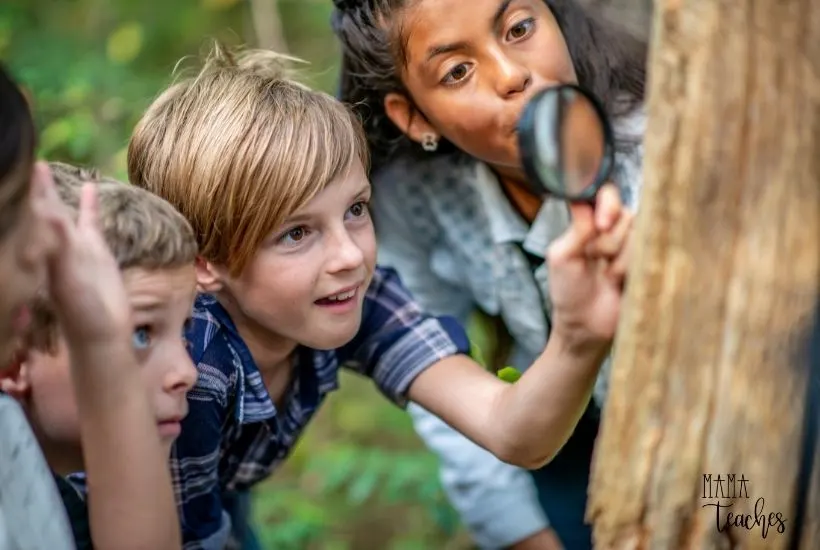
This article contains affiliate links to things that you might like.
The Definition of Nature Schooling
Nature schooling (also called forest schooling) is not new.
For thousands of years, children have been outside, learning from nature.
Parents and teachers would take their students outside for lessons and learning.
In the last hundred years, cities have grown and expanded, and rural areas and forests have been paved over.
Children no longer have ready access to the outdoor classroom, and parents and educators have forgotten how to utilize the great outdoors as a teacher.
Nature schooling returns children to the outdoors–a classroom without walls.
Here they can forge their own path of learning because nature schooling/forest schooling is child-led, play-driven, and place-specific.
Nature will give your child different opportunities to learn in different environments, seasons, and weather patterns.
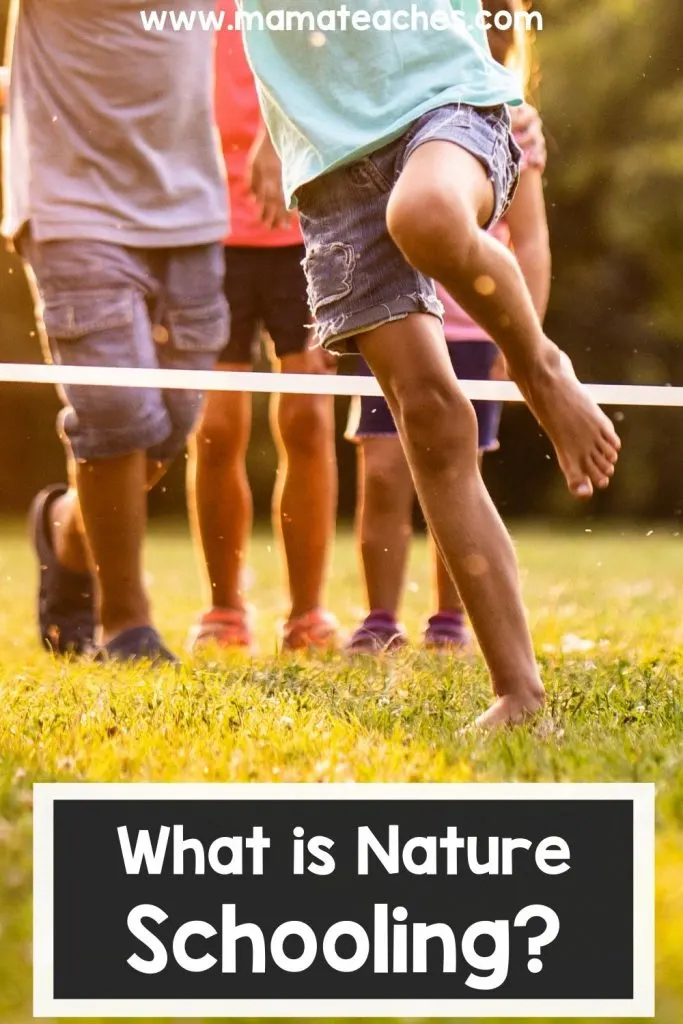
How to Do Nature Schooling
So how do you start nature schooling?
Read on!
Pick a Location
Nature schooling can take place anywhere in nature, but the forest is a great place to start.
You can also hold nature school at the beach or in a meadow.
You don’t need to change locations often because the location will change for you.
Different weather patterns and seasonal changes will bring new opportunities for learning and exploration.
Dress for the Weather
Nature schooling can take place in all types of weather as long as you have the right gear.
Invest in rain boots, waterproof jackets, and cold weather gear.
As long as you are dressed appropriately, you can always spend time outside.
(Of course, if it is storming, move inside or under cover.)

Keep Your Lesson Plans Loose
Spontaneity and exploration are the names of the game in nature schooling, but that doesn’t mean you don’t teach.
You can use storytelling, drama, songs, and problem-solving activities to direct play and learning.
By using open-ended materials and activities, learning will always suit the needs of the child.
The Benefits of Nature Schooling
Nature schooling has a host of benefits.
Enthusiasm
No more boring classrooms.
Children are excited and motivated to explore nature.
They transform into active, curious learners.
Health
Sitting all day is not healthy for anyone.
The fresh air and exercise promote physical, social, and emotional health.
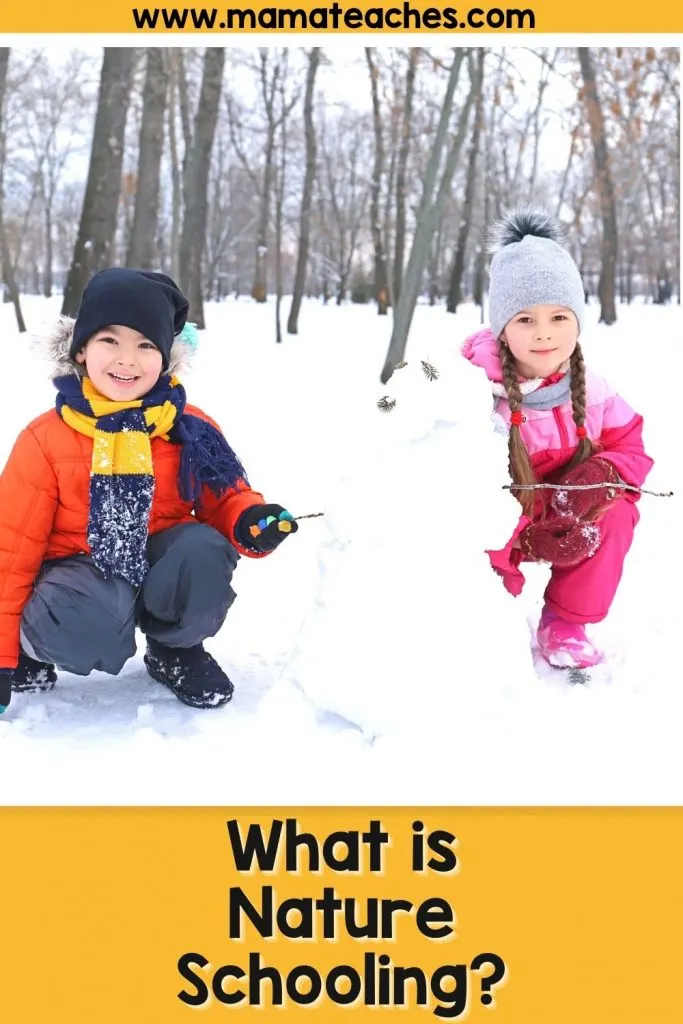
Creativity
Nature provides materials that are open-ended.
What can you do with a stick?
The opportunities are endless.
This fosters creativity in the child.
In nature schooling, children also get to solve practical problems (for example, “How can I build a teepee?”).
This teaches not only creativity and problem-solving skills but grit.
Connection
Children who spend lots of time outdoors learn to love it, and this appreciation for nature and its beauty will last their whole lives.
By spending time in the same location, your child will learn the songs of local birds and the names of the trees.
She’ll run her fingers over springy moss and examine ant hills.
The will smell the deep, earthy scent of the forest after a rain.
In short, she’ll build a connection to nature.
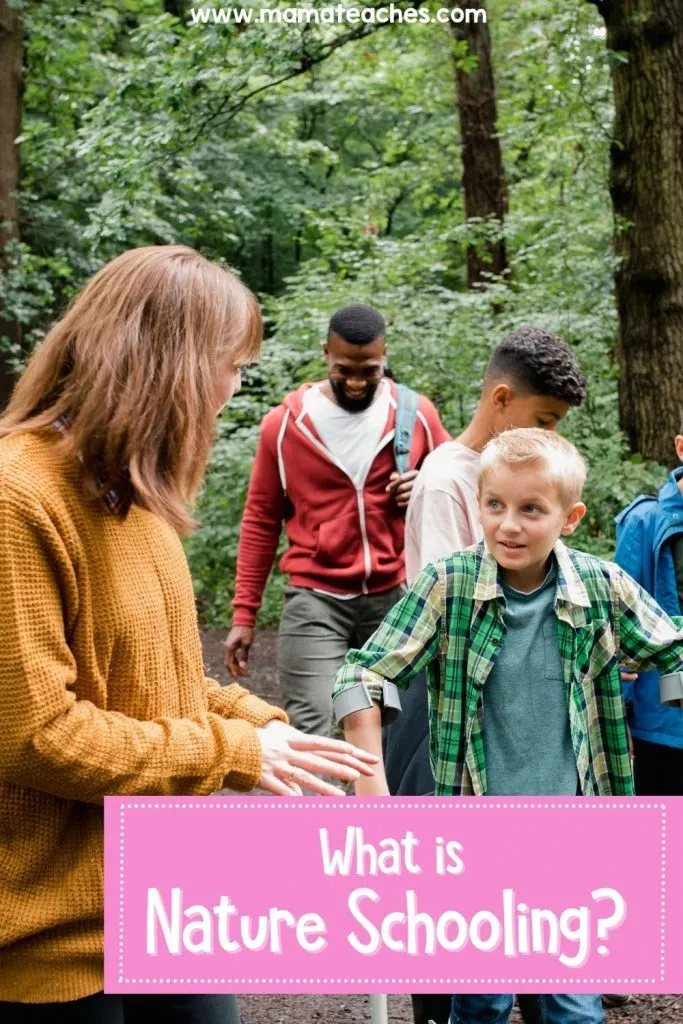
15+ Nature Schooling Ideas
Are you unsure about open-ended learning?
Here are some nature schooling activities to try:
- Stone collecting, stacking, and balancing
- Writing on dry leaves
- Making faces on leaves or out of leaves
- Collecting nuts and pinecones and making patterns with them
- Building a lean-to
- Building a “squirrel bridge” between tree branches
- Making musical instruments with natural materials
- Making a “bug hotel”
- Finding your magic wand (aka your favorite stick) and pretending
- Making a mud cafe
- Counting fern fronds
- Weaving or braiding vines or long-stemmed flowers
- Matching shells
- Collecting leaves in gradations of color
- Making mud paint and natural paint brushes
- Bouldering (aka climbing rocks)
- Crafting toy boats out of found materials
The opportunities are endless!
Nature is an inexhaustible classroom.
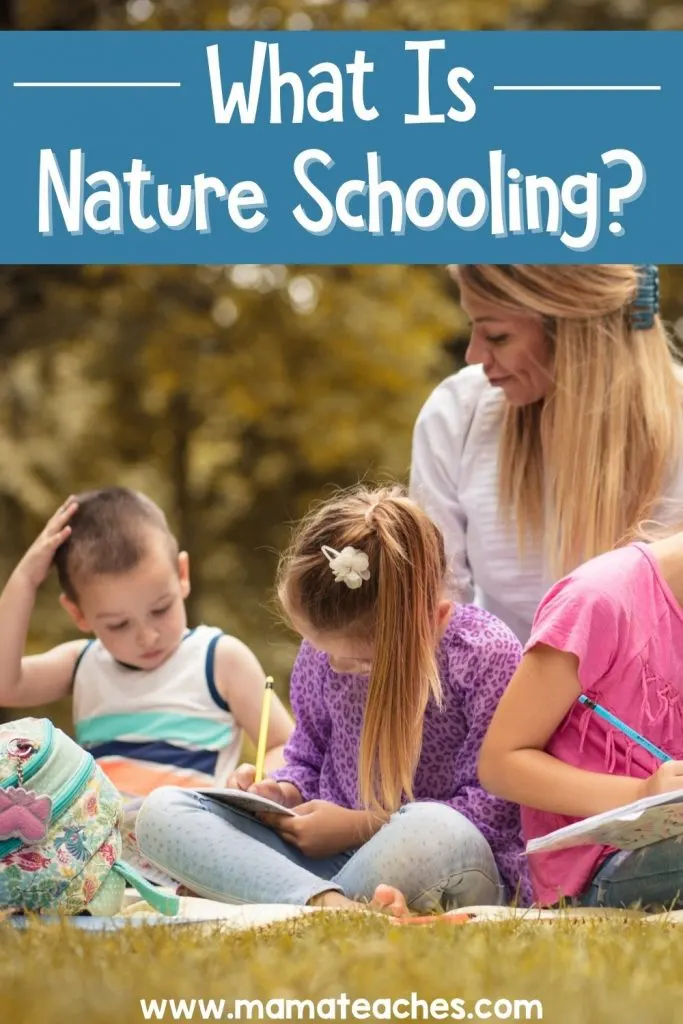
Nature Schooling Explained
What are you waiting for?
Grab some snacks, pull on your boots, and head out to the world’s largest classroom: nature!
